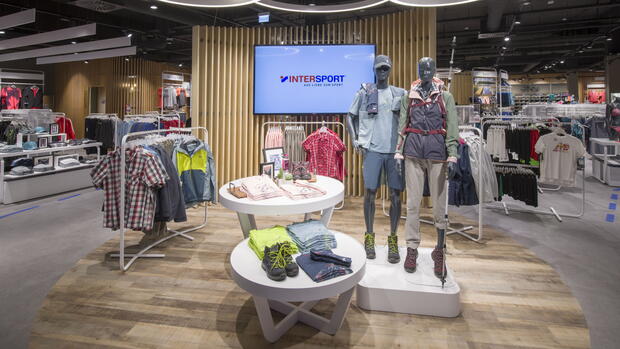Munich The online sporting goods trade boomed during the pandemic. Customers ordered running shoes or jogging pants for the home office online, and large manufacturers such as Adidas are massively expanding their direct business. But now market leader Intersport sees a comeback of the stationary trade.
“Customers are increasingly coming to the shops again,” said Intersport board member Frank Geisler to the Handelsblatt. In the sports sector – unlike in the fashion industry – there is a strong need for advice. If you are looking for a running shoe, you usually want to be able to choose between several brands. “It shows that online growth has its limits.”
Intersport also expects that around 60 percent of sales in the industry will be generated online in 2030. It is currently around 40 percent in the cooperative dealer network.
However, a good proportion of this is accounted for by stationary retailers who also sell their goods over the Internet. “Many come to the shops and then order online if the specific model is not in stock,” says Intersport boss Alexander von Preen.
The online euphoria has also subsided at the world’s second largest sporting goods group, Adidas. Ex-boss Kasper Rorsted wanted above all to expand direct sales, the dealers often did not get the latest goods. Successor Björn Gulden has now made a radical change.
The new Adidas boss approaches the specialist retailers.
(Photo: dpa)
“We really, really, really have to take retail seriously again,” the new Adidas boss said recently. For the time being, he does not want to increase the direct sales share from the current 30 percent. Young people who play football wanted to compare models from different manufacturers in a shop.
>> Read about this: What the new Adidas boss has already changed – and what he still wants to achieve
Although direct sales are more lucrative for the manufacturers, the dealers take part of the risk from them. This is particularly evident in the current situation. The industry continues to achieve good sales growth. “The sports boom continues even after Corona,” says von Preen.
In the 2021/22 financial year, which ended on September 30, external sales in the Intersport group with its 463 locations and around 1,700 sales outlets increased by 25 percent to a record value of 3.3 billion euros. In the first half of the new financial year, sales also increased in double-digit percentage terms.
Inventories in the industry are high – this creates price pressure
But the entire industry suffers from excessive inventories. During the pandemic, when demand was high, there was a lack of goods, so retailers ordered in excess. “There is an extremely large amount of goods on the market, they first have to be sold. Returns will suffer as a result,” says von Preen.
The Intersport dealers are now at least making progress. Since April, however, the sale has been progressing and demand is still strong, says CEO Geisler. “We see every week how the stock is now reducing again.”
But the warehouses are still well stocked and the discount pressure is high. The US chain Foot Locker is therefore expecting a drop in sales of up to eight percent this year, which recently caused the share to collapse by more than a quarter. For the manufacturers, the advantage of doing business via specialist retailers is now evident: some of the goods are now stored in their warehouses, not at Adidas, Nike or Puma.
“The sports boom continues even after Corona.”
(Photo: Intersport)
Because even then, the stocks at the manufacturers are already high enough. At Adidas, they rose by half last year to almost six billion euros. In the first quarter they could at least be reduced back to 5.7 billion euros.
The largest German retailer association, Intersport, wants to gain further market share in the coming years. The chain wants to grow by more than five percent every year until 2030.
A new flagship store concept is intended to attract customers. Among other things, the participating dealers must have a strong regional brand, an exclusive location in the inner city, a special service concept and at least 2500 square meters of retail space. In addition, they should serve the running, training, sport style, outdoor and winter sports segments.
The standing wave and climbing wall are designed to lure customers into the shops
“We have a clear catalog of criteria for spearheading the sports retail trade,” says Intersport board member Geisler. Anyone who meets the requirements can hope to be the first to receive particularly coveted new products in the future as part of promotions. The concept is to be implemented from autumn and then rolled out across Europe. “We believe in the future of inner cities,” says von Preen.
Four houses in Germany have received the exclusive flagship seal so far, and there shouldn’t be many more. They often have special attractions to lure customers into the store. For example, customers at Engelhorn Sports in Mannheim can practice on a large climbing wall. At L&T in Osnabrück, a standing wave invites you to surf.
Sports retail in Germany is highly competitive. The French discounter Decathlon has announced that it intends to double its sales in Germany to 2.5 billion euros by 2026. In addition, dealer associations dominate. The Sport 2000 dealers focused early on specializing in trend sports such as running and mountaineering and achieved record sales of 3.31 billion euros last year.
More: Why the new Adidas boss Gulden relies fully on the retailers again.
